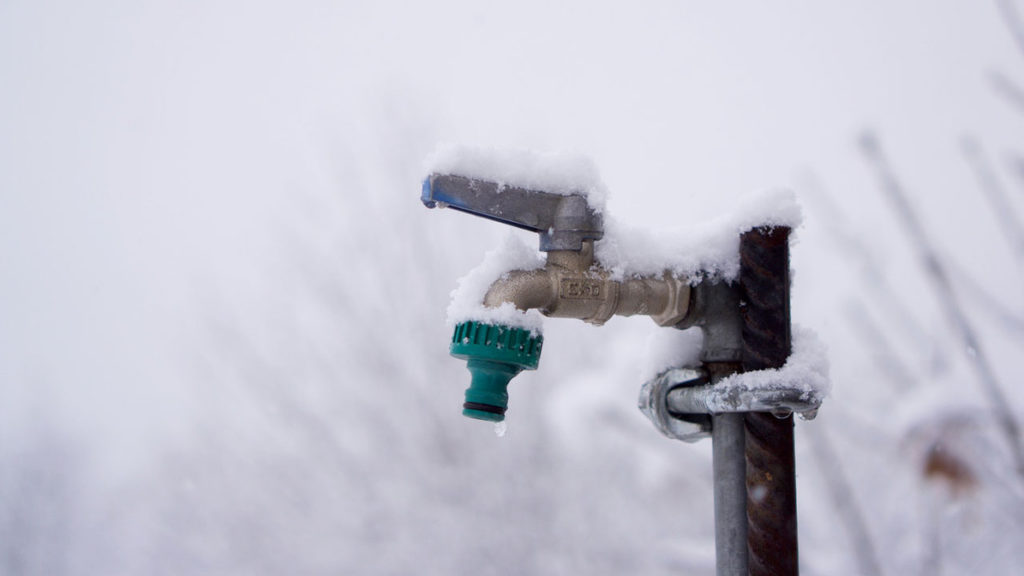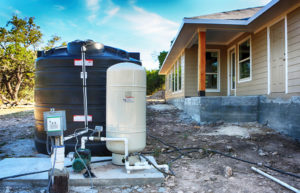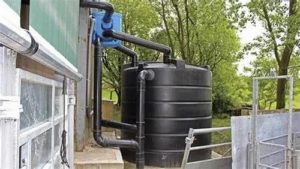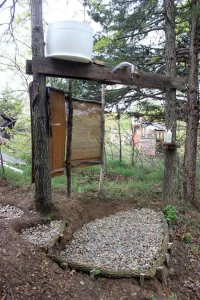As the colder months approach, it becomes increasingly important to take steps to prevent freezing and ensure a consistent year-round supply of water.
Winter water management is important to maintaining uninterrupted services for both residential and commercial properties.
Whether you’re responsible for managing a small household or an entire office building, understanding how to protect your water systems during the winter months can save time, money, and potential headaches down the line.
We’ll delve into some practical strategies and techniques for preventing freezing and ensuring year-round access to clean drinking water.
Disconnect and drain outdoor hoses and faucets
Winter temperatures can cause water inside hoses and faucets to freeze, causing damage. Disconnect and drain these devices before the first frost to prevent damage.
One of the most important steps you can take is to disconnect and drain any outdoor hoses and faucets before the first frost.
Water inside these devices can freeze and cause significant damage, ranging from cracked hoses to busted faucets.
To prevent this from happening, simply disconnect the hose from the faucet and allow the water to drain completely.
For added protection, you can also winterize your faucets by installing freeze-proof cartridges or wrap the faucet with a frost-proof cover.
By taking these simple steps, you can prevent costly repairs and ensure the longevity of your outdoor plumbing.
Insulate exposed pipes
Uninsulated pipes in unheated areas like basements, crawl spaces, and garages are susceptible to freezing. Use foam pipe insulation or wrap pipes with heat tape or thermostatically controlled heat cables to keep the water inside the pipes from freezing.
Insulating exposed pipes in unheated areas such as basements, crawl spaces, and garages is a important step in protecting your plumbing system from freezing during the winter months.
Uninsulated pipes are vulnerable to freezing temperatures, which can cause them to burst and result in costly repairs and replacement.
To prevent this, you can use foam pipe insulation or wrap pipes with heat tape or thermostatically controlled heat cables.
Foam pipe insulation is a simple and cost-effective solution that can be cut to fit around individual pipes.
It provides a barrier against cold temperatures and can be easily installed over exposed pipes.
Heat tape or thermostatically controlled heat cables, on the other hand, can be wrapped around pipes and provide a more reliable and long-lasting solution.
These devices are designed to heat up automatically when the temperature drops below a certain threshold, ensuring that your pipes remain thawed and functional even during extended periods of cold weather.
By taking these preventative measures, you can significantly reduce the risk of frozen pipes and costly repairs, and ensure a warm and comfortable living space all winter long.
Let cold water drip slowly
During freezing temperatures, let cold water drip slowly from the faucet served by exposed pipes. Running water is less likely to freeze than standing water.
Here’s a detailed elaboration on the text Let cold water drip slowly
During freezing temperatures, it’s important to ensure that exposed pipes are protected from freezing.
One effective method is to let cold water drip slowly from the faucet served by exposed pipes.
This technique takes advantage of the principle that running water is less likely to freeze than standing water.
When water is exposed to cold temperatures, it can freeze and cause pipes to burst, leading to costly repairs and potential water damage.
By letting cold water drip slowly, you are providing a continuous flow of water that is less likely to freeze.
This constant flow helps to maintain a consistent temperature, which in turn reduces the risk of freezing and bursting pipes.
The drip flow helps to prevent the buildup of ice inside the pipes, which can also cause damage and disrupt the flow of water.
To effectively implement this method, it’s important to ensure that the drip flow is slow and consistent.
A steady, dripping flow will help to maintain a consistent temperature and prevent the buildup of ice inside the pipes.
It’s also essential to check the drip flow regularly to ensure that it remains steady and consistent.
Open cabinet doors under sinks
Opening cabinet doors under sinks allows warm air to circulate around the pipes, which can help prevent freezing.
The warm air circulating around the pipes can help to maintain their temperature and prevent them from freezing.
This is especially important for exposed pipes located in unheated areas like under the sink, as they are more susceptible to freezing.
By leaving cabinet doors open, you can ensure that warm air can reach these pipes and prevent any potential damage or disruptions.
You can also consider leaving the cabinet doors open during cold snaps to allow for more consistent air circulation.
This simple step can help to protect your plumbing system and keep your pipes from freezing, saving you the inconvenience and expense of costly repairs.
Let hot water drip slowly
If you have a dripping faucet on an exposed pipe that is not in a heated area, consider letting it dripping slowly. This can help keep the water inside the pipes from freezing.
Letting hot water drip slowly from an exposed pipe in an unheated area can help prevent frozen pipes during cold weather.
The slow drip of water helps maintain a constant temperature inside the pipe, which can prevent the water inside from freezing.
As the temperature drops, the water inside the pipe can expand and cause damage or blockages, but by allowing a slow drip, you ensure that the water is continuously flowing and maintaining a consistent temperature.
This is especially useful for exposed pipes in outdoor areas, such as garden hoses or laundry lines, as well as for pipes located in unheated areas like basements or crawl spaces.
By taking this simple precaution, you can protect your pipes from freezing and ensure uninterrupted access to water during colder months.
Install freeze-proof faucets and hoses
Consider installing freeze-proof faucets and hoses to eliminate the need for disconnecting and draining them during winter.
Installing freeze-proof faucets and hoses is a practical solution to protect your home’s plumbing system from the harsh effects of winter weather.
These fixtures are designed to withstand freezing temperatures, ensuring that your water supply remains uninterrupted even during extreme cold snaps.
Unlike traditional faucets and hoses, freeze-proof models do not require disconnection and draining during winter, saving you time and effort.
Instead, they automatically shut off the water supply when the temperature drops, preventing the water inside the faucet or hose from freezing and bursting.
This not only prevents costly damage but also minimizes the risk of water damage and mold growth.
By investing in freeze-proof faucets and hoses, you can enjoy peace of mind and a more resilient plumbing system all year round.
Use a pressure tank and pump
If you have a well or a private water supply, use a pressure tank and pump to maintain water pressure. This can help prevent pipes from freezing due to lack of water pressure.
To prevent pipes from freezing due to lack of water pressure, consider installing a pressure tank and pump in your well or private water supply system.
A pressure tank is a vessel that stores water under pressure, while a pump is responsible for maintaining that pressure.
By installing a pressure tank and pump, you can ensure a consistent and reliable water supply to your home or business, even during periods of low demand.
This is especially important during cold winter months when pipes are more susceptible to freezing.
The pressure tank and pump work together to maintain a consistent water pressure, which helps to prevent pipes from freezing due to the lack of water flow.
A pressure tank and pump can help to protect your plumbing system from damage caused by freezing and thawing, which can prolong the life of your pipes and fixtures.
Overall, using a pressure tank and pump is an effective and reliable solution for maintaining water pressure in a well or private water supply system.
Monitor temperature and pressure
Keep track of the temperature and water pressure in your home. Low temperatures and low water pressure can cause pipes to freeze. If you notice either of these conditions, take action to prevent freezing before it occurs.
Monitoring temperature and pressure is important to preventing pipes from freezing in your home.
Low temperatures and low water pressure can cause pipes to freeze, leading to costly damage and inconvenience.
To avoid this, keep track of the temperature and water pressure in your home and take action to prevent freezing before it occurs.
Check the temperature in exposed areas such as the basement, crawlspace, or unheated areas like the garage or shed.
Also, monitor the water pressure by checking the pressure gauge on your water meter or by observing the water pressure in your faucets.
If you notice either of these conditions, take action immediately.
If the temperature drops below 32°F (0°C), consider letting the cold water drip from the faucet served by exposed pipes.
This small amount of water movement helps prevent the pipes from freezing.
You can insulate exposed pipes in unheated areas, like the garage or crawlspace, to protect them from the cold.
For low water pressure, you can check the water meter for any leaks or obstructions.
If you find any issues, repair them promptly to prevent low water pressure from causing pipes to freeze.
By actively monitoring temperature and pressure, you can prevent costly pipe freezes and ensure your home’s plumbing system remains safe and functional throughout the winter months.
Want More? Dive Deeper Here!
Hey there! If you’re the type who loves going down the rabbit hole of information (like we do), you’re in the right spot. We’ve pulled together some cool reads and resources that dive a bit deeper into the stuff we chat about on our site. Whether you’re just killing time or super into the topic, these picks might just be what you’re looking for. Happy reading!
- Winter Watering of Livestock | Master Grazer
- Get Ready: Winter Livestock Management | Whatcom Ag Monthly | Washington State University
- Winter livestock management | OSU Extension Service
- Protecting Water from Freezing | Small Farm Sustainability
- Extension educator publishes article for ranchers on watering livestock in winter | University of Nevada, Reno






